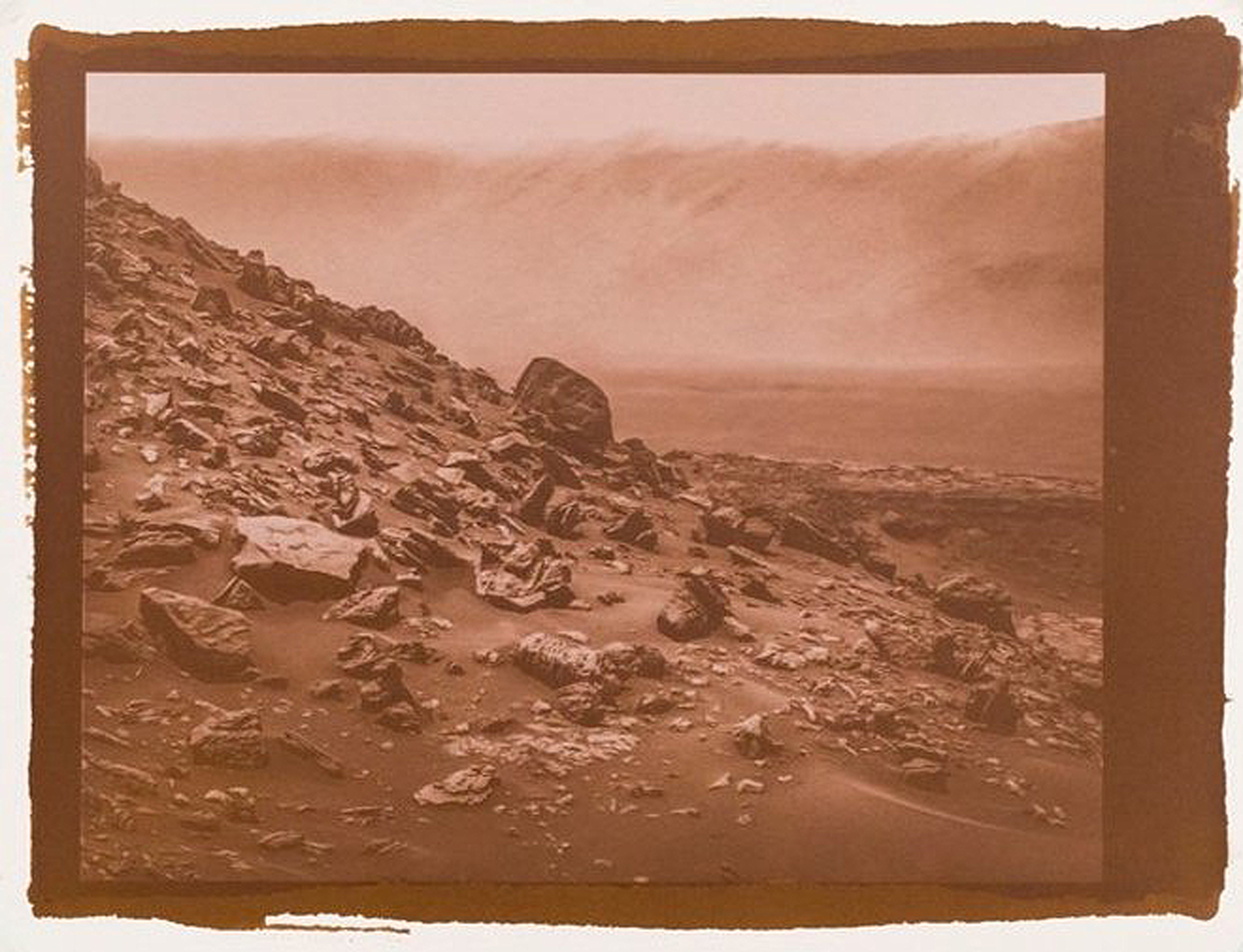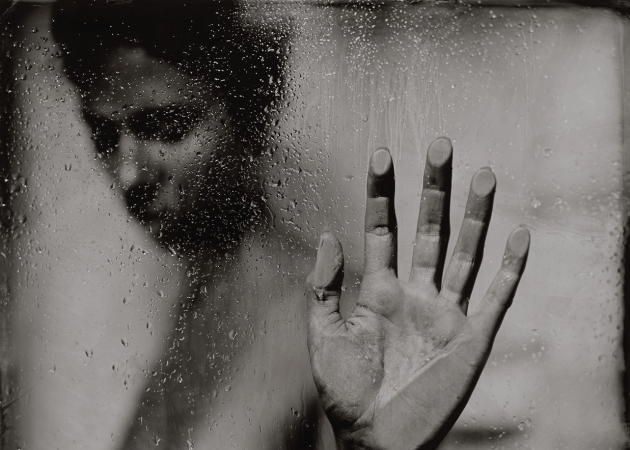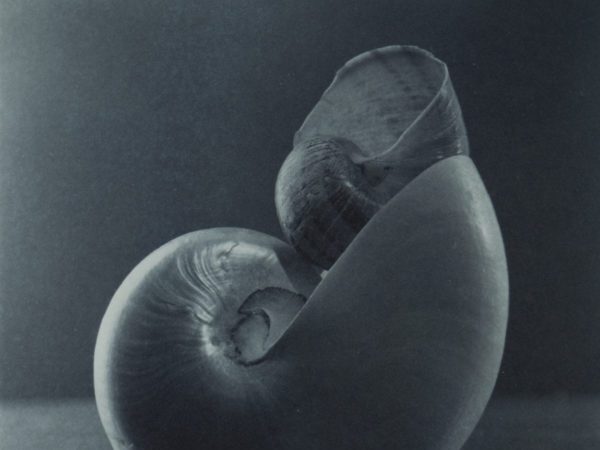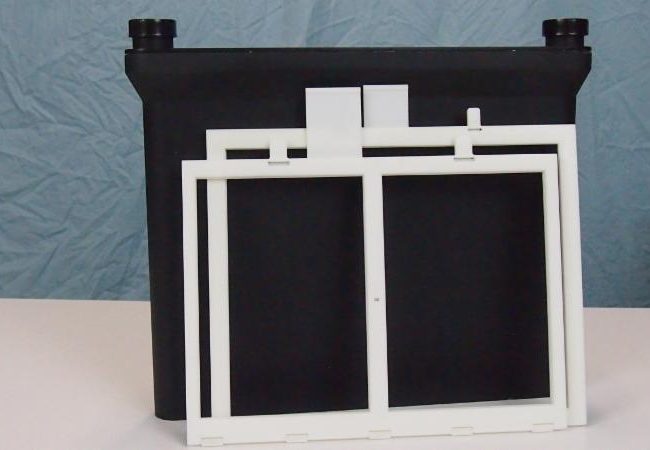Gold Street Studios, Trentham East, Victoria 24 & 25 October…

Exhibition: Turned Toward the Firmament – Joachim Froese
Joachim Froese presents a series of downloaded NASA photographs of Mars translated into unfixed salt prints. Washed in a strong solution of sodium chloride the prints are stabilized but not permanent. They remain sensitive to UV light and are destined to change and eventually disappear.
Jan Manton Gallery. Teneriffe. Queensland. Until 17 February 2024.
Photograph above: Curiosity, Sol 1454 (2) Mars. 2023. Unfixed salt print 20 x 25 cm. Joachim Froese.
Previous Post: Darkroom – Mat Hughes




That is an interesting idea. Presumably, the NASA photographs are in the public domain.
A question: ‘how do you translate the NASA photographs into a salt print that is then exposed in indirect sunlight within a frame?’
Howdy Gary,
I like this idea, especially the historical text on Joachim`s website. I should imagine this would be a fairly familiar process for those working with digital negatives. He says that he downloads the photographs which for these prints of a modest size is absolutely possible. The rest is, as they say, contact printing!
Hi Gary David Tatnall asked me to respond – He highly likely would have made inkjet negatives from the files down loaded from Nasa
best regards
Ellie
Thanks very much Ellie.
The American photographer DM Witman in 2015 made a series of salt prints of ski fields that are very much effected by climate change. The prints were designed to fade when exposed to UV light. The project is called Melt. It is a very powerful message about climate change: https://www.dmwitman.com/melt
Thanks very much Matt, David and Ellie for that information. It is much appreciated.
Is this the process to make an inkjet negative?
Open your downloaded image in your photo editing software, convert to greyscale to make the negative, flip the image horizontally, invert the image, place a sheet of Digital Transfer Film in your inkjet printer, then print. Once the negative is dry you place the negative face down on your paper to make your print.
Have I got that process right?
Gary, there are dedicated programs for making digital negatives, but yes that is correct.
The process of making digital negatives has become better and better. Not long ago ‘alternative process’ photographers wouldn’t dream of using digital negatives, now almost all use the process. So much so that large format cameras larger than 4×5 or 5×7 are being used less and less due to the ease and quality of large format digital negatives.